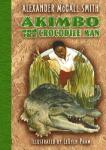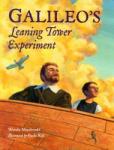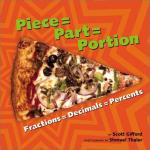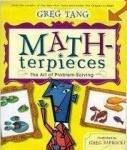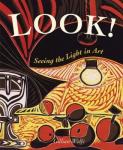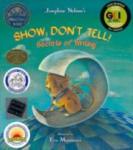Grades 3-5
Akimbo and the Crocodile Man
This series for young readers, written by my favorite contemporary author, has all Husband and I look for in a children's book:
Piece = Part = Portion
There are lots of fraction books for kids out there with photos of every conceivable flavor of... Pizza. This book has the fractions, it has pizza, but thankfully it does not stop there! It provides a progression of various portions to a sliced—but intact—pizza representing the whole (1/1 = 1 = 100%). The connections it makes between the fractional part and its decimal and percentage representations is what makes it different, and useful. My kids have had a difficult time making this connection at home, perhaps because their own homeschool teacher suffers from the same ailment?
Look! Seeing the Light in Art
I found this quite accidentally when browsing the art shelves in the non-fiction children books section at our library system's main branch last week.
Mind you, I am always carting around mountains of books in huge, oversize bags, and I am thankful for strong, teen sons, and for downtown ballet and piano classes allowing me the time to browse at the library.
Galileo's Leaning Tower Experiment
Science readers are to be found if you look around enough as this book demonstrates. It is the fictional story of Massimo, a boy who regularly throws his uncle's lunch off a bridge to his boat as his uncle rows by below. Galileo happens to see that the bread and the cheese land at the same time. The story ends atop the leaning Tower of Pisa, as legend suggests Galileo did.

